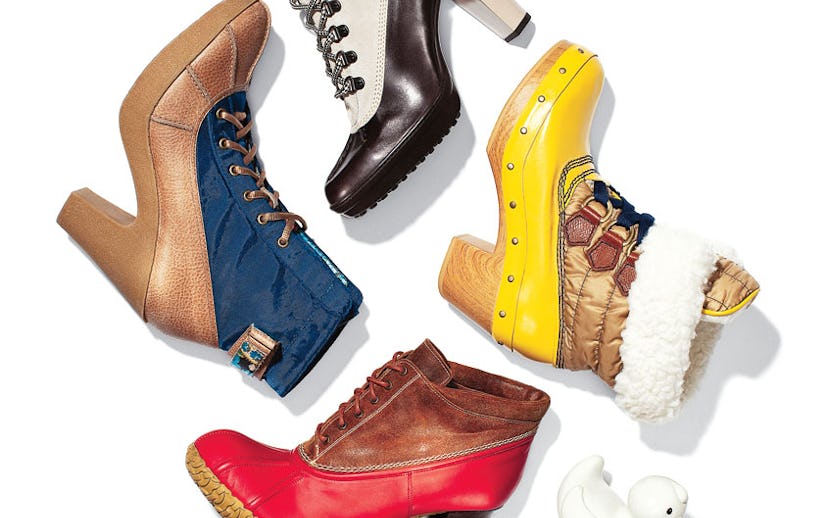
Fashion
read this if winter totally ruined your shoes
there’s hope for those booties!
We’ve been told to walk a mile in someone’s shoes to truly understand them. But after this season’s generous supply of snow and ice, just walking down the block in our own shoes is hard enough. Though our spirits may be down from the cold, it’s our footwear that’s truly suffered. We’ve gathered the best tips on how to care for your shoes after the winter months—so that they can make it to next year's snowpocalypse in one piece.
But first, why does leather require more care than other materials? Leather is not a manmade material, like rubber or nylon, which hold up well in moist and wet environments. Leather is animal skin—it’s composed of fibers held together by protein bonds. The oils in leather keep the protein bonds strong and ensure the fibers don’t fall apart. When boots get soaked or covered in snow, the moisture strips away the oils and makes your shoes dry and less supple. If they continue to get wet and lose oils, the protein bonds won’t be able to hold the fibers together. Ultimately, boots will become brittle and crack. Imagine dragging your purse through the snow and ice every day! Keeping your favorite leather shoes away from moisture and well oiled is the key to making them last.
Rhyme to repeat: Don’t wear leather in bad weather.
Sounds obvious, but we hate carrying an extra pair of shoes around in our bag as much as the next polar vortex victim. To ensure your leather boots stay looking new, don’t wear them when it’s icy, snowing, or raining outside. Purchasing a pair of waterproof shoes, like rain boots or duck boots, to wear outside is an investment worth making. Be proactive about checking the weather each morning. While it’s easier to dash out the door wearing your new loafers, stash them in your bag and put on more weather-appropriate shoes for commuting instead.
Take ‘em to a professional.
A professional can prep your shoes for the upcoming winter and repair any damage that’s been done at the end of the season. Often, cobblers will add a protective rubber layer to the bottom of a boot or heel to prevent deterioration from wet surfaces. They know how to best match polishes to shoes—ensuring your flats look as shiny as the day you bought them. Cobblers also make shoes soft again by using professional-grade conditioners. The conditioning process takes time and effort, since the conditioner must be carefully and repeatedly massaged into the leather fibers. Think of cobblers like dry cleaners for shoes. Professionals frequently clean and care for your favorite dress and sweater. Why shouldn’t your everyday boots get the same love, even if just once a year?
Do what you can at home.
It’s unrealistic to assume you’ll never get caught in an unexpected shower or flurry (or hey, even downpour). If this does happen, take action before your boots dry. Use a damp washcloth or rag to remove any dirt while your shoes are still wet. Doing this ensures mud doesn’t cake on the leather—making it even tougher to clean off later. For intense grime that needs more than a cloth and water, try using baby shampoo or uncented Dove soap to lightly wash. If your shoes are really soaked, tightly stuff them with newspaper or crumpled up magazine pages. As your shoes dry out, this will help them retain their shape.
If cared for properly, leather can last for years. Following these tips will guarantee your favorite riding boots will be shiny and ready-to-wear for many Octobers to come. Not having to buy new soles will keep your soul (and wallet) happy, too.